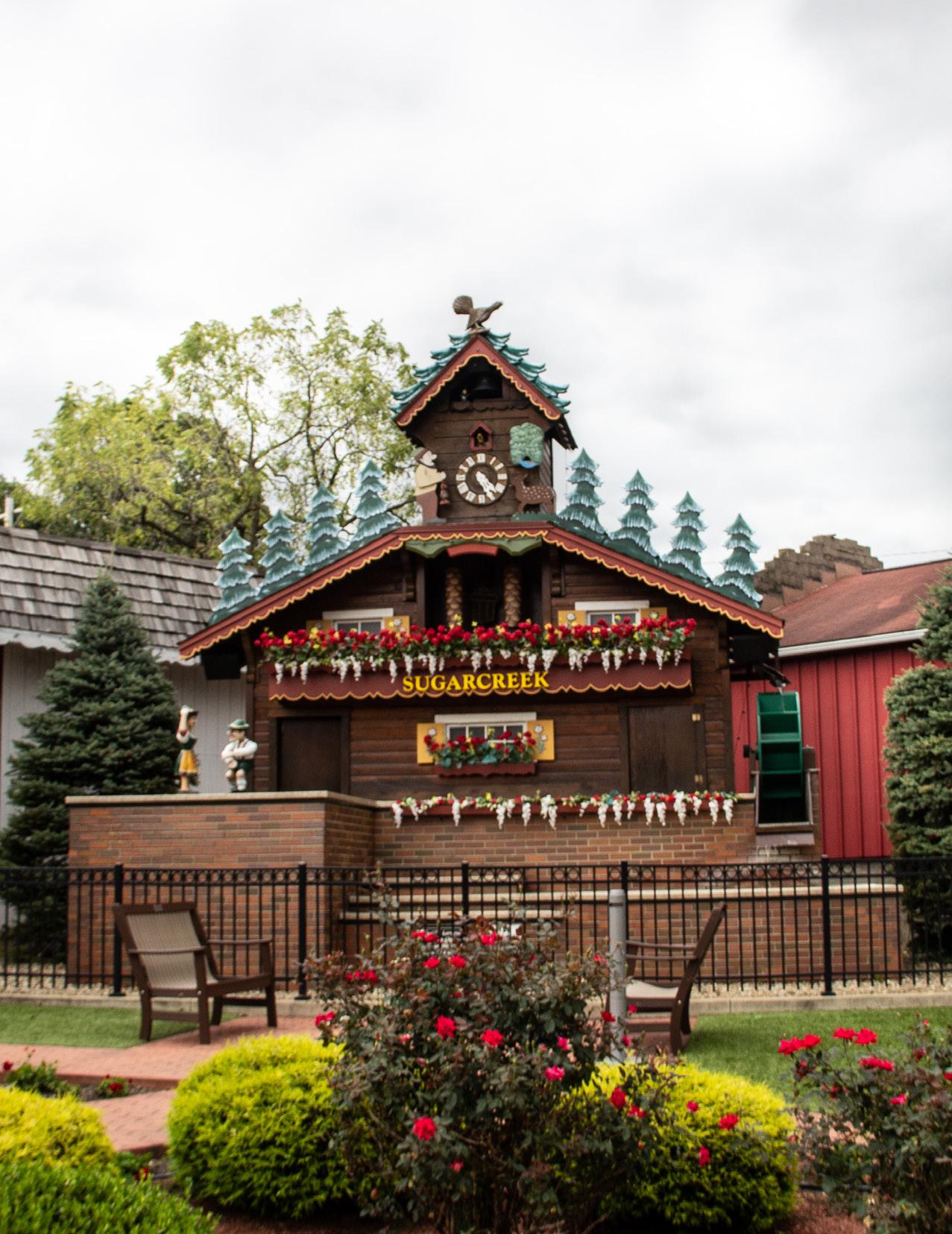
4 minute read
Connecting the Dots
ABOVE: Cheryl Blosser explaining the history of coal mining families and their places of residence to those on the LCBD historical walking tour.
The Little Cities of Black Diamonds celebrates the coal mining region
STORY BY JORJA BUTT | PHOTOS BY LANE MOORE
Appearing as small dots on maps of Southeast Ohio, small towns are sprinkled throughout the hills of Appalachia. The Little Cities of Black Diamonds, as they’re called, represent some of the most important historical moments of the coal mining industry in America.
The citizens of Perry County formed the Little Cities of Black Diamonds Council (LCBD) to educate the public. In 1990, founding members John Winnenberg and Cheryl Blosser took the first steps. The more they researched, the more they found out just how important coal mining was to the area.
“The name [Little Cities of Black Diamonds] goes back to the Civil War when the newspapers were following the coal boom,” Blosser says. “Nelsonville started out as a sleepy little town… then one of the newspaper articles referred to it as a true little city of black diamonds.”
Once new mines began to develop and the industry became profitable, the region of Perry County and Hocking Valley boomed. Seventy new coal towns developed over the span of 20 years.
Laborers flocked from all over the world as new mines began to pop up in the Hocking Valley. According to the LCBD history archives, settlers from parts of Europe such as Italy, Germany, Hungary, Poland, and Czechoslovakia began to pour into this region of Ohio in the 19th century.
Unions formed to protect miners and pressure mine owners. According to Blosser, many of the important union meetings took place in Ohio because it was a central location among the coal states. These laborers and miners became prominent figures in labor movements and strikes that affect labor laws to this day.
“Because the American Federation of Labor (AFL) and the United Mine Workers got their starts here, all those things changed to where we started to have safety laws and child labor laws,” says Blosser.
Preserving the stories of the miners who fought to earn fair work is what LCBD strives to do. Through documentaries, books, and events, they spread the word of these important small towns in Appalachia.
“I think people should be proud of this; they should be proud that their ancestors fought for all of these things to give them a better life,” says Blosser.
As the Little Cities of Black Diamonds expanded their reach, more council members decided to educate themselves and other members. Historian and

LEFT: Family of European immigrants who came to the area to participate in the coal mining industry.
BELOW: Historic Shawnee sign located in the center of the town.
-Tyler McDaniel
social media executive Tyler McDaniel is one of the organization’s youngest members dedicated to honoring the past.
“We’ve morphed into a group that not only protects those stories but gets them written down and are trying to share them with people to let them know why it’s important,” McDaniel says.
LCBD aims to reach community members through events that celebrate the history of the area, such as the annual Little Cities of Black Diamonds Festival. Though normally held in person, COVID-19 limited the 2021 festival to an online format.
What was held on one day became a six-day celebration, filled with history lectures, films, raffles and more. Another positive aspect of moving online was that the festival could reach a wider audience.
“It’s really cool to connect people who otherwise couldn’t come to Southeast Ohio to see this event, so it’s been nice in that regard,” McDaniel says.
LCBD also connects family members to their ancestors.
“We’ve had people from Europe reach out to us because they’ll have a family member who died here and is buried here, so people contact us who are looking for information,” says McDaniel
The history of the Little Cities of Black Diamonds is more than just preserving the monuments and stories of those who paved the way for generations to come. It is about continuing the history and educating others to make their stories known.
“There are a lot of people who don’t care or don’t understand why they should feel pride because they live or grew up in this town, so we [LCBD] are trying to instill a community pride,” says McDaniel.
LITTLE CITIES OF BLACK DIAMONDS
200 Main Street, New Straightsville, OH, 43766 740-270-8048 www.lcbdohio.org











